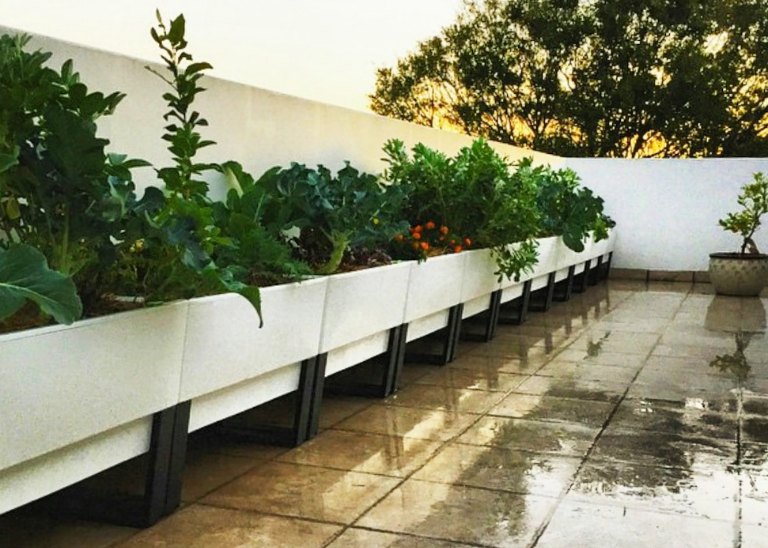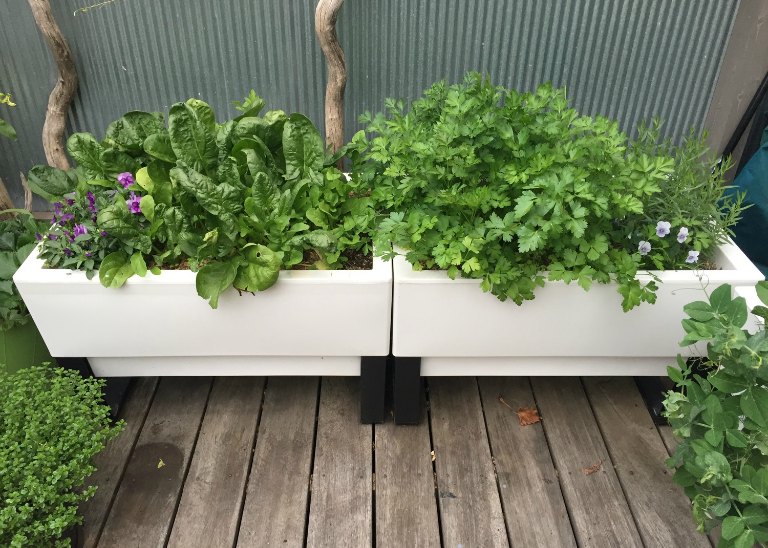It would be really nice to have a kitchen that’s connected with the backyard providing you a very easy access to your small herbal garden spot. I really envy those people that do have that luxury, since I live in an apartment on the high floors of a very tall building in Melbourne and all I can rely on is a balcony with a design pattern that simply doesn’t support a small garden instalment. And since I love cooking and love even more experimenting with cocktails, drinks and desserts, I often have to drive to the herbal market just to get the herbs I need. That’s OK, I can live with driving a few times a week just for that, but the fact that I need fresh herbs every day is just unbearable. So, I had to think of a way to get a small herbal garden spot in my kitchen.

All that small project of mine would’ve been impossible if I had to choose some of those old planters which are small, have a very weak round construction and were used by our grannies for planting flowers in them, which means mainly for decorative purposes. You can’t make a small herbal garden in such a small space. Having that in mind, I started searching for garden planter pots that will be of a suitable design suitable for an in-home use. And how lucky I was.
The planters
I found the cutest garden planter pots on the market; they’re large enough to hold more herbs and quite stylish: sleek lines, modern legs and fancy colours. Aside the appealing design, these planters come with the most convenient feature for busy women such as myself: they have a self-watering mechanism! To be honest, I was kind of sceptic about me taking care of plants with all my busy daily schedule. So you can only imagine my thrill when I learned about this feature. It’s actually a very innovative process: the planter has a water reservoir underneath the soil pot connected with it through a capillary web that transfers water. There’s also a mechanism that shows you just how much water is left and when you need to refill it. And that’s all. Ah, so lovely! I got about three of these planters and two smaller ones.

The choice of herbs and how to plant them
You can plant just about any herb you’d like in your garden planter pots as long as the conditions they’re going to grow in suit them. I mainly use 4 types of herbs that I need to have fresh all the time, so I decided to plant a quantity of them.
- Basil – I love the aroma basil gives to soups and the morning smoothies I make with ice, lemon and water. Besides for cooking, I use basil for home-made face masks for anti-ageing treatments. It’s widely known that basil has a number of health benefits, and one of them is preventing wrinkles. Basil is best planted from seeds or from nursery seedlings, so if you want it already grown, visit a plant nursery.
- Sage – a cup of sage tea in days with severe cold is a God’s blessing. But sage from a tea bag and fresh sage is definitely not the same thing. Plus, sage makes a wonderful decorative plant, so when it grows enough with it’s greyish leaves, you’d have a very fancy plant corner in your kitchen. To plant it you need seeds or as in the case of basil, you can use seedlings.
- Mint – I think anyone who claims to be a cocktail master should have a planter with fresh mint in their home. A mojito without mint leaves simply doesn’t taste right. Besides famous cocktails, mint is often used for salad dressings, for desserts and other drinks. It’s so versatile in its use it would be a shame not to have it in the kitchen. It can be also planted from seedlings, and the important thing here is to give it full sunlight and regular water, which luckily is settled with my new planters.
- Lavander – divine smell and huge ornamental value since its colour is just gorgeous. I want to have a whole planter with lavander so when it blooms that colour would easily become a focal point in my kitchen. It will so go along with the overall design. It’s fairly easy to plant it and maintain it in both planters and directly in the ground.
Once I got all the main elements for my kitchen herbal garden, I only needed to get the right soil type, the fertilizers and actually do the dirty work. All that turned out perfectly well, and now I have a perfect small herbal garden in the comfort of my kitchen – right where I need it.

